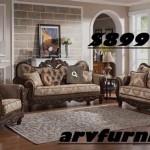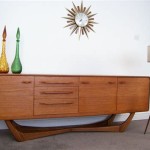What Color Paint Matches Brown Furniture?
Selecting the right paint color to complement brown furniture is a crucial element in interior design. Brown furniture, in its various shades and styles, can evoke feelings of warmth, sophistication, or rustic charm. The paint color chosen for the walls will either enhance these qualities or create an undesirable clash. Therefore, it is essential to carefully consider different color palettes and their impact on the overall ambiance of the room.
The dominance of brown furniture in a space typically establishes a grounding effect. Brown, being an earthy tone, tends to ground the room. The surrounding colors either support this grounded feel or introduce contrast and visual interest. Understanding the nuances of brown and its interaction with other colors is the foundation for successfully matching paint with brown furniture. This process involves considering the undertones within the brown itself, available lighting, and the desired atmosphere for the room.
Many homeowners consider the type of brown furniture they have when selecting a paint color. Dark brown pieces, such as those made from walnut or mahogany, provide a dramatic and rich base for the room. Lighter browns, such as oak or pine, tend to be more casual and inviting. The style of the brown furniture, whether it’s modern, traditional, or eclectic, also guides the paint color selection process.
Understanding Brown Undertones
Brown, despite appearing visually straightforward, is a complex color composed of various undertones. These undertones play a significant role in determining which paint colors will harmonize effectively with the furniture. Common undertones found in brown furniture include red, yellow, green, and even gray. Identifying the specific undertones present in the brown furniture is the first step towards selecting a complementary paint color.
Furniture with red undertones pairs well with warm colors like terracotta, cream, and even muted greens. The red undertones in the furniture create a sense of warmth, which these colors enhance. Conversely, colors with cool undertones, like blues, grays, and some purples, can create a striking contrast that can be visually appealing if executed correctly.
Browns with yellow undertones tend to be more versatile, pairing well with both warm and cool colors. These browns readily complement shades of blue, green, and lavender, creating a calming and inviting atmosphere. Warm colors like golds, yellows, and oranges can also work well but require careful consideration to avoid overwhelming the space.
Furniture with green undertones often exudes a natural, earthy feel. These browns pair well with other earthy tones, such as greens, beiges, and browns. To create a more dynamic space, introduce contrasting colors with purple or deep reds. The key is to maintain a balance between warmth and coolness, ensuring that the room feels cohesive rather than disjointed.
Grayish browns, sometimes referred to as "taupe" or "greige," offer a neutral base that complements a wide range of colors. These versatile browns work well with both cool and warm palettes. Light blues, soft grays, and creamy whites enhance the subtle sophistication of grayish browns, while warmer colors like blush pink, coral, and mustard yellow add a touch of vibrancy.
Complementary Color Palettes
Once the undertones of the brown furniture have been identified, the next step is to explore different color palettes that complement those undertones. Several established color schemes consistently work well with brown furniture, offering a range of aesthetic options.
A classic approach to complementing brown furniture is using a neutral palette. Neutral colors, such as cream, beige, gray, and white, provide a versatile backdrop that allows the brown furniture to stand out without competing for attention. These colors create a sense of balance and sophistication, particularly when paired with darker brown furniture. However, neutral palettes can sometimes feel monotonous, so it's important to introduce texture and visual interest through accessories and textiles.
For a more vibrant and energetic space, consider incorporating warm colors like oranges, reds, and yellows. These colors create a sense of warmth and intimacy, effectively complementing the earthy tones of brown furniture. However, it’s crucial to use these colors judiciously, as an excess of warm colors can overwhelm the room. Accent walls, throw pillows, and artwork are effective ways to introduce warm colors without making the space feel too intense.
Cool colors, such as blues, greens, and purples, provide a calming and refreshing contrast to brown furniture. These colors create a sense of spaciousness and serenity, making them ideal for bedrooms and living rooms. Lighter shades of blue and green work particularly well with light brown furniture, creating a relaxed and airy atmosphere. Deeper shades of blue and purple can add a touch of drama and sophistication when paired with dark brown furniture.
Monochromatic color schemes, which involve using different shades of the same color, can also be effective in complementing brown furniture. For example, using varying shades of beige or brown can create a cohesive and harmonious space. Monochromatic schemes work best when texture and pattern are incorporated to add visual interest and prevent the room from feeling flat.
The choice of color palette also depends on the desired mood and function of the room. Bedrooms often benefit from calming colors like blues and greens, while living rooms may benefit from warmer, more inviting colors like oranges and yellows. Home offices may require neutral colors that promote focus and concentration, while dining rooms can handle bolder colors that stimulate conversation and appetite.
The Impact of Lighting and Furniture Style
Beyond undertones and color palettes, there are other crucial considerations when selecting paint colors to match brown furniture. The amount of natural and artificial lighting in the room can significantly affect how colors appear. The style of the brown furniture, whether it's modern, traditional, rustic, or eclectic, also plays a vital role in determining the appropriate paint color.
Rooms with abundant natural light can handle a wider range of colors, including darker and more saturated shades. Natural light tends to enhance the vibrancy of colors, making them appear more intense. In contrast, rooms with limited natural light may benefit from lighter and brighter colors, as these colors help to reflect light and make the space feel more open.
Artificial lighting also plays a crucial role in shaping the perception of color. Warm light, such as that produced by incandescent bulbs, tends to emphasize warm colors and diminish cool colors. Cool light, such as that produced by fluorescent bulbs, tends to emphasize cool colors and diminish warm colors. It's important to test paint colors under both natural and artificial lighting conditions to ensure that the chosen color appears as intended.
The style of the brown furniture should also be taken into account when selecting a paint color. Modern furniture, with its clean lines and minimalist aesthetic, often pairs well with neutral colors and bold accent walls. Traditional furniture, with its ornate details and classic silhouettes, may benefit from more traditional color schemes, such as creamy whites, muted greens, and rich reds.
Rustic furniture, with its natural materials and earthy tones, often complements warm colors like beiges, browns, and greens. Eclectic furniture, which blends different styles and eras, requires a more carefully curated color palette that balances harmony and contrast. In general, it's best to start with a neutral base and then introduce pops of color through accessories and artwork.
Moreover, the overall size of the room is another factor to consider. Lighter colors can make a space feel larger and more open, while darker colors can create a sense of intimacy and warmth. In smaller rooms, it's generally best to avoid using too many dark colors, as they can make the space feel cramped and claustrophobic. Larger rooms can handle darker colors more effectively, but it's important to ensure that the space remains well-lit and inviting.
Ultimately, selecting the right paint color to match brown furniture is a process that requires careful consideration of multiple factors, including undertones, color palettes, lighting, and furniture style. By taking the time to analyze these factors and experiment with different color combinations, it's possible to create a space that is both visually appealing and harmonious.

Ideas For Wall Colors That Go With Brown Furniture The Inside

Ideas For Wall Colors That Go With Brown Furniture The Inside

Ideas For Wall Colors That Go With Brown Furniture The Inside

What Color Walls Go With Brown Furniture Q

What Color Walls Go With Brown Furniture Q

9 Paint Colors That Go With Brown Furniture Paintzen

What Color Walls Go With Brown Furniture Q

What Is The Best Wall Color For A Living Room With Brown Furniture

Ideas For Wall Colors That Go With Brown Furniture The Inside

Living Room Paint Colors That Match Dark Brown Furniture Google Search
Related Posts







